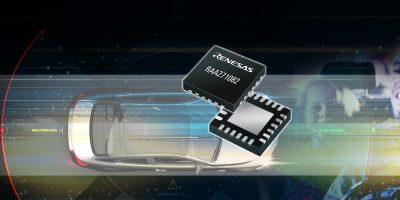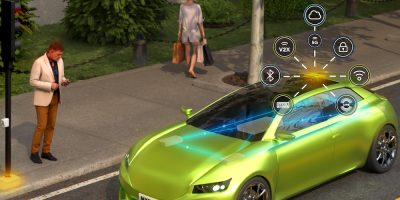Providing universal power for automotive cameras, the RAA271082 is a versatile ISO-26262 compliant multi-rail power IC with a primary high voltage synchronous buck regulator, two secondary low voltage synchronous buck regulators, and a low voltage LDO regulator. The IC from Renesas offers four over-voltage and under-voltage (OV/UV) monitors, I2C communications, a configurable general purpose I/O pin and a dedicated reset output/fault indicator. To meet ASIL B metrics, the RAA271082 includes a second independent reference for OV/UV monitors, built-in self-test at power-up, independent OV/UV monitoring, and continuous CRC error checking on internal registers and I2C communications.
The integrated RAA271082 is a companion for Renesas’ automotive high-definition link (AHL) technology that enables car manufacturers to deliver high-definition video using inexpensive cables and connectors. The PMIC simplifies power supply design for automotive camera applications requiring functional safety compliance, modules that include surround view/satellite, rear view, driver monitor and e-mirrors. The RAA271082 supports the power requirements of almost any combination of image sensor, image signal processor (ISP) and encoder technology, while also supporting direct-from-battery as well as power-over coax supply.
The RAA271082’s integration and comprehensive safety features make it suitable for 16- and 32-bit automotive MCUs in a variety of applications, advised Renesas.
The RAA271082 is available today, along with the RTKA271082DE0000BU evaluation board.
Renesas Electronics combines expertise in embedded processing, analogue, power, and connectivity to deliver semiconductor solutions in the automotive, industrial, infrastructure and IoT market sectors.







